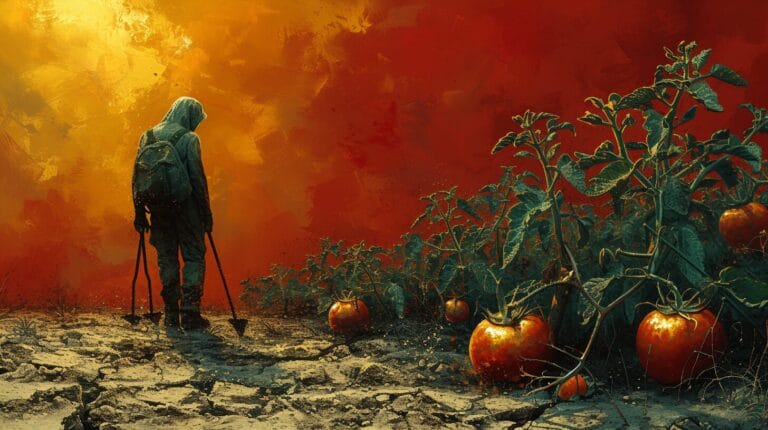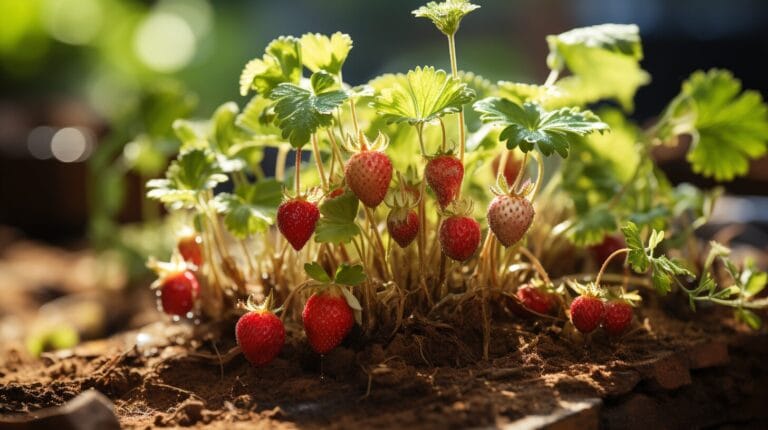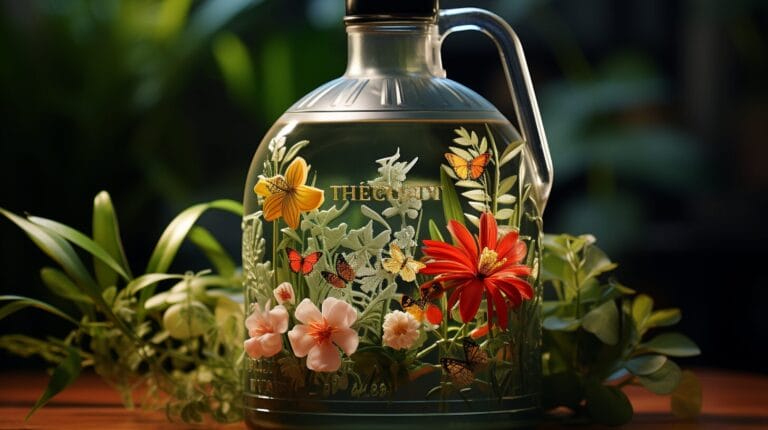Yellow Flower That Grows In Grass: Identifying Common Lawn Weeds
If you are a passionate enthusiast of the great outdoors, or you simply enjoy stunning scenery, it’s likely you’ve seen the small yellow blossoms growing among the flora.
These vibrant blooms add a captivating burst of color to your garden. However, did you know that these attractive blossoms might be more than just pleasing to the eye? Indeed, these could be weeds finding their way into your garden! Identifying and managing these yellow bloomers, such as Dandelions, can be a challenging but necessary task if you aim to maintain your garden’s aesthetic and health.
This article will guide you to identify and manage these golden intruders. Buckle up and let’s delve into what these golden guests might mean for your cherished patch of green!
Key Takeaways
- Identifying common yellow flowering lawn weeds, such as dandelions and creeping buttercups, is vital for effective weed control.
- Controlling yellow flowering lawn weeds can be achieved using organic methods like hand-pulling or applying natural herbicides made from vinegar or salt.
- Chemical weed killers can also be used for managing these weeds, but precautions should be taken to protect yourself and the environment
- Proper lawn care practices, including regular mowing at the correct height and proper watering techniques, are essential for preventing the growth of yellow flowering weeds.
Identifying Common Weeds with Yellow Flower That grows in Grass
Gardeners should become familiar with several species of common lawn weeds with yellow flowers, as these pesky plants often invade manicured lawns and flower beds. Recognizing them is the first step in controlling their spread effectively.
Let’s explore some of the most common yellow-flowering lawn weeds you’re likely to encounter.
Dandelion
Dandelions are common weeds known for their bright yellow flowers. These plants have deep and broad roots, producing numerous airborne weed seeds, thus taking over lawns rapidly.
Managing dandelions requires either uprooting them or treating them with a specific herbicide.
Yellow Nutsedge
Yellow Nutsedge is a quickly spreading weed recognizable by its yellow flowers and triangular stem shape, differentiating it from other grasses. Love for wet and poorly drained areas makes it common in such environments.
If this weed appears in your lawn, it might indicate your soil or water drainage issues needing attention.
Common Ragwort
Despite its beautiful yellow flowers, Common Ragwort can become a nuisance when left unchecked, as it takes over and consumes ample space.
Its sap can cause skin irritation, and ingesting the plant can harm animals despite its allure to butterflies owing to its vibrant blooms.
Creeping Buttercup
Despite its beauty, this low-growing plant with bright yellow flowers grows rapidly. It can cover a substantial area if not controlled.
To remove Creeping Buttercup, try hand-pulling it from the root or use a specific tool designed to eliminate weeds.
Golden Clover
Golden Clover has bright yellow flowers and clover-like leaves and can crowd out grass, depriving it of moisture and nutrients.
It’s important to identify Golden Clover early to control it effectively.
Birdsfoot Trefoil
Birdsfoot Trefoil or Lotus corniculatus is another common weed with bright yellow flowers and clover-like leaves. This weed can grow and spread quickly if not controlled.
It is considered a weed as it competes with other desirable plants for space and resources. Regular weeding and proper lawn care are crucial to prevent this weed from spreading.
Wild Parsnip
Wild Parsnip is an invasive plant capable of causing chemical burns on human skin. This weed tends to be pervasive, growing along roadsides and other disturbed areas.
Yellow Woodsorrel
Yellow Woodsorrel, often mistaken for clover due to its trifoliate heart-shaped leaves, is known for its small, bright yellow flowers. This weed can rapidly colonize lawns and gardens, especially in shaded areas.
It can be difficult to eradicate due to its ability to reseed itself even after being pulled out. Regular lawn maintenance and targeted herbicides can help control its spread.
Yellow Salsify
Yellow Salsify is characterized by its large, dandelion-like yellow flowers and tall, grassy foliage. This weed can be quite resilient and tends to grow in disturbed soils.
Since its roots go deep, thorough digging is often necessary to remove it completely. Keeping your lawn healthy and dense can prevent its growth.
Yellow Rocket
Yellow Rocket, also known as Barbarea vulgaris, is distinguishable by its bright yellow, small clustered flowers. It thrives in moist, nitrogen-rich soils, often found in poorly drained lawns.
Regular mowing and maintaining a healthy lawn can help control its spread. Herbicides may be used for more severe infestations.
Yellow Archangel
Yellow Archangel, with its vibrant yellow flowers and variegated leaves, can quickly become invasive in shaded areas of the garden. It spreads by seed and runners, making it a challenge to control.
Manual removal is effective but must be thorough to prevent regrowth. Mulching can also help suppress its spread.
Common Evening Primrose
Common Evening Primrose, or Oenothera biennis, is characterized by its trumpet-shaped flowers. This wildflower is challenging to control and eliminate from lawns due to its quick spread through prolific seed production.
How to Control Yellow Flowering Lawn Weeds

Managing yellow flowering lawn weeds can be achieved through several effective methods. One approach uses organic weed control methods, such as hand-pulling or natural herbicides made from ingredients like vinegar or salt.
Gardeners can also use chemical weed killers designed to target and eliminate these types of weeds. It is crucial to follow the instructions carefully and consider the product’s potential impact on other plants, wildlife, and the environment.
Native Regions of Yellow Flowering Weeds
Yellow flowering weeds grow native to several regions, including North America, Europe, Asia, and parts of Africa. However, their adaptability makes them invasive species outside their native regions, providing a significant challenge for gardeners.
Understanding the native regions of yellow flowering weeds provides valuable insight into their growth patterns and behavior within various ecosystems worldwide.
Caring for Yellow Flowers in Your Lawn
If your lawn carries these yellow flowers, follow these tips to adequately care for them and maintain a healthy lawn.
- Water regularly: Provide consistent watering to your lawn.
- Fertilize appropriately: Use a balanced fertilizer to promote yellow flowers’ growth.
- Mow at the right height: Proper mowing helps prevent weed growth.
- Keep an eye out for weed control: Regularly inspect and remove invasive weeds promptly.
Having explored the world of yellow flowers that grace our lawns, let’s add a splash of vibrant color by delving into the captivating realm of red flowering bushes and shrubs next!
Conclusion
Identifying and controlling yellow flowering lawn weeds is essential for maintaining a beautiful and healthy garden. With knowledge of the common weeds carrying yellow flowers and utilizing organic or chemical weed control methods, you can prevent these intrusive plants from invading your lawn.
Don’t forget to incorporate regular and appropriate lawn care routines to keep your yard lush, vibrant, and weed-free!
FAQs
What is a common weed with yellow flowers on my lawn?
A common weed that grows in the grass and has yellow flowers could be dandelion, yellow sorrel, or yellow salsify.
How can I tell what type of yellow weeds are growing on my lawn?
You can identify the type of weed by looking at its features like flower shape, leaf color, size of blooms, and when the flowers bloom.
Can bright yellow weeds harm other plants in my garden?
Some bright, invasive weeds like dandelions and bird’s-foot trefoil may compete with other desirable plants for nutrients and space.
Are all small yellow flowers growing in lawns bad?
Some that feature small yellow flowers belong to native plants beneficial for pollinators or erosion control; however, it’s best to always check as they might also have harmful effects!
Is there a way to stop weeds from growing on my lawns?
Regular lawn care, watering properly, and enjoying thick growth to prevent new plants from sprouting, including mowing at the right heights, helps keep your lawn weed-free.
Do some weeds produce edible parts or hold any benefits?
While many people see them as annoyances, some common garden “weeds” like dandelions and wild radishes yield edible greens/roots. In contrast, others act as effective soil stabilizers against erosion.







